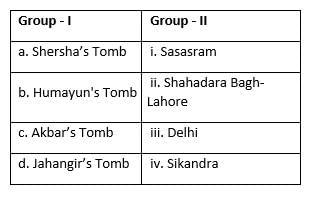UGC NET Paper 2 Sociology Mock Test - 8 - UGC NET MCQ
30 Questions MCQ Test UGC NET Mock Test Series 2025 - UGC NET Paper 2 Sociology Mock Test - 8
Eco-feminism is a theoretical perspective that addresses the connection between gender and nature. Which one of the following statements correctly explains the eco-feminism perspective?
Marriage between single pairs, without involving the rights of exclusive cohabitation with each other is referred to as-
Automation affects industrial employment by:
_______ is a form of sampling in which the population is divided into a number of strata or subgroups and a sample is drawn from each division.
Within the feminist movement, a wide and diverse range of theories have emerged. Arrange these perspectives in sequence.
a. Marxist Feminism
b. Post-Modern Feminism
c. Liberal Feminism
d. Black Feminism
e. Radical Feminism
Choose the correct answer from the given options :
Indicate the statement which is not correct from the following:
The general trends emerging in the realm of families today are -
Mass Media is becoming a very important agency of socialization. Which one of the following is the most appropriate statement?
Under the Ministry of Science and Technology, The Survey of India (SOI) was set up in:
________ is the effect of undesirable changes in our surroundings that have harmful effects on plants, animals and human beings.
Which of the following ideas did not form part of the early phase of India's development policy?
A repudiation of the logocentric construction of grand narratives is termed as
Transformation of Human Societies from agrarian to industrial and to post-industrial has widely been shaped by:
Who of the following classified the functions of the family into essential and non-essential?
Which of the following is referred to as a disease that becomes unusually widespread globally?
Which of the following are the elements of association?
Arrange the following steps in the process of hypothesis testing in proper sequence:
A. Select the level of significance
B. Setup null and alternative hypothesis
C. Establish the decision rule
D. Performance computations
E. Select test statistics
F. Draw conclusion
Choose the correct answer from the options given below:
Match the following:

The correct answer is:
|
92 docs|125 tests
|














